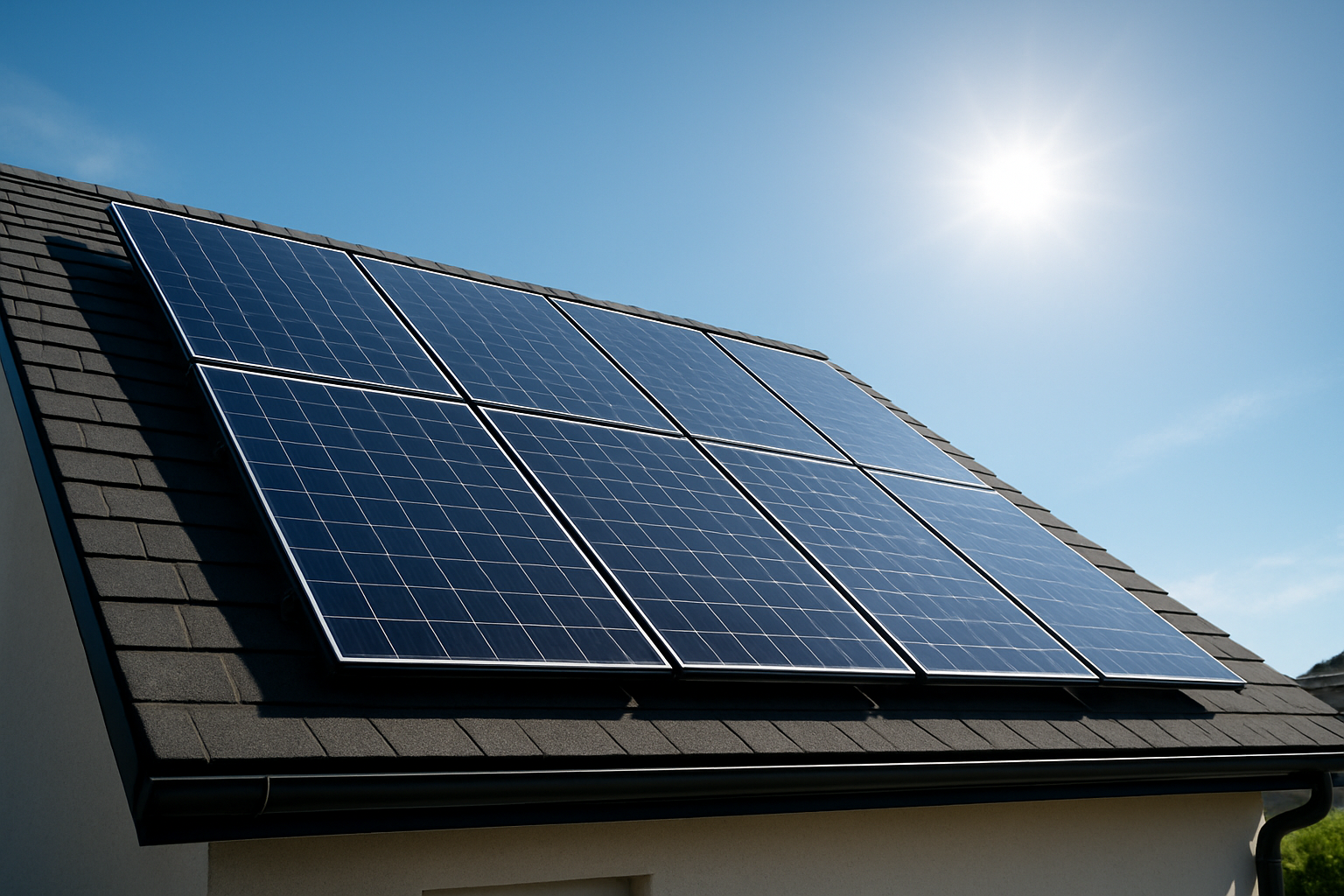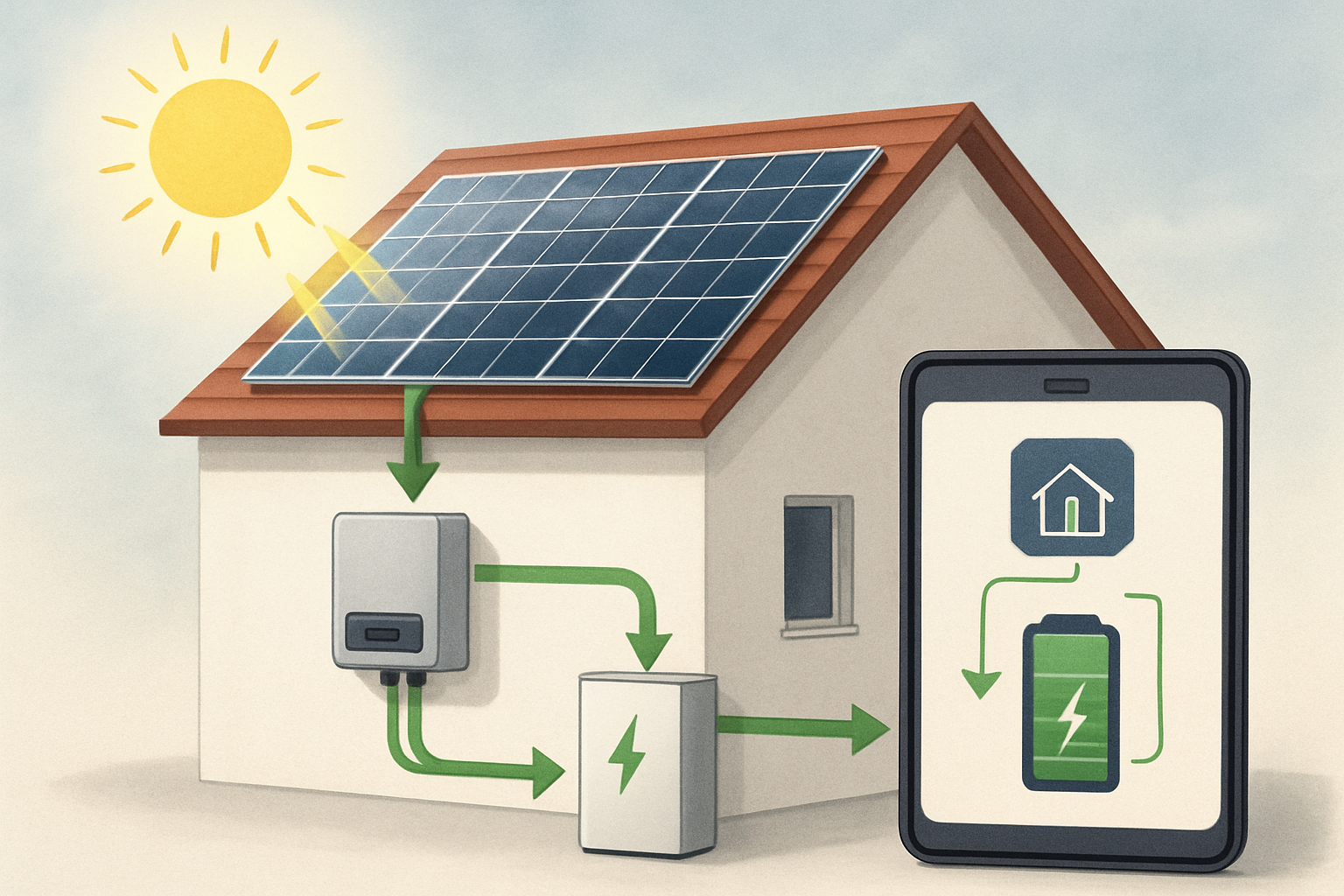Embarking on a solar energy journey for your home or business involves more than just choosing panels. Understanding solar panel efficiency metrics is a fundamental step. These metrics help you assess a panel's performance, compare options, and make informed decisions that impact your energy independence. This guide breaks down the key measurements, offering a clear path to understanding how solar panels convert sunlight into the electricity you use.

The Core Metric: Solar Panel Efficiency Explained
At its heart, solar panel efficiency measures how effectively a panel converts the sunlight it receives into usable electricity. It is expressed as a percentage. A higher efficiency percentage means the panel can generate more electricity from the same amount of sunlight, which is especially beneficial if you have limited roof space or specific energy needs.
What "Efficiency" Really Means
When light strikes a solar cell, some photons are reflected, some pass through, and others are absorbed. The absorbed photons with sufficient energy separate electrons from their atomic bonds, creating an electric current. Solar panel efficiency is the percentage of this incoming solar energy that transforms into electricity. For example, a 20% efficient solar panel converts 20% of the sunlight hitting it into electricity.
Standard Test Conditions (STC) and Their Importance
Manufacturers test solar panels under controlled laboratory conditions known as Standard Test Conditions (STC). This allows for a fair and consistent comparison between different solar panel models. STC defines specific parameters for testing: a cell temperature of 25°C (77°F), a solar irradiance of 1000 watts per square meter (W/m²), and an air mass (AM) of 1.5. The 1000 W/m² irradiance simulates peak sunlight on a clear day.
These standardized conditions ensure that when you see a panel rated at, for example, 400 watts-peak (Wp), this value represents its output under these ideal testing parameters.
Understanding Nameplate Efficiency
The efficiency percentage you see on a solar panel's specification sheet is its nameplate efficiency. This number is determined under STC. While it provides a crucial benchmark for comparing panels, it is important to remember that real-world performance can vary due to factors like actual temperature and irradiance levels. Residential solar panels typically range from 13% to 22.8% efficiency, with many hovering around the 20% mark.
Beyond Nameplate: Real-World Performance Metrics
While STC offers a baseline, solar panels rarely operate under these exact conditions outdoors. Several other metrics provide a more realistic picture of how a panel performs in diverse environments.
Nominal Operating Cell Temperature (NOCT)
Nominal Operating Cell Temperature (NOCT) provides a more practical efficiency measurement than STC. NOCT conditions aim to simulate real-world outdoor performance. These conditions include an irradiance of 800 W/m², an ambient air temperature of 20°C (68°F), and a wind speed of 1 meter per second (m/s), with the panel mounted in open air.
A typical NOCT value for a solar panel is around 45°C. Considering NOCT helps you predict how a panel will perform on an average sunny day, accounting for factors like heat buildup, which naturally occurs when panels are exposed to sunlight.
| Parameter | Standard Test Conditions (STC) | Nominal Operating Cell Temperature (NOCT) |
|---|---|---|
| Cell Temperature | 25°C (77°F) | Actual cell temperature (typically 45°C - 48°C) |
| Irradiance | 1000 W/m² | 800 W/m² |
| Ambient Air Temperature | Not specified for cell, but cell is 25°C | 20°C (68°F) |
| Wind Speed | Not specified | 1 m/s |
| Purpose | Laboratory benchmark for comparison | More realistic estimate of outdoor performance |
Temperature Coefficient
Solar panels perform best at cooler temperatures. The temperature coefficient indicates how much a panel's power output changes for every degree Celsius increase above 25°C. This coefficient is almost always a negative percentage. For example, a temperature coefficient of -0.4% per °C means that for every 1°C increase above 25°C, the panel's power output decreases by 0.4%.
A lower (closer to zero) negative temperature coefficient is preferable, especially in warmer climates, as it indicates less power loss as the panel heats up.
Power Tolerance
Power tolerance specifies the expected variation of a solar panel's actual output from its stated nameplate power. It is typically expressed as a percentage or in watts, such as +/- 5% or 0 to +5W.
A panel with a 0 to +5W power tolerance, for instance, means it will produce its rated power or up to 5 watts more under STC. This positive tolerance ensures you receive the expected performance or potentially more, adding value to your investment. A narrow or positive power tolerance often suggests a higher quality panel.
Degradation and Longevity
Solar panels are built to last, but their power output naturally decreases over time. Understanding degradation and warranties helps you anticipate long-term performance.
Annual Degradation Rate
Solar panel degradation refers to the gradual reduction in a panel's power production over its lifespan. This is a normal process. The median annual degradation rate for solar panels is around 0.5% per year. This means a panel will typically produce about 0.5% less energy each subsequent year. Some premium panels may have even lower degradation rates, around 0.3% per year.
It is worth noting that some initial degradation, known as Light-Induced Degradation (LID), can occur in the first few hours or days of exposure to sunlight, typically ranging from 1% to 3%, after which the rate slows considerably.
Power Output Warranty
Manufacturers provide a power output warranty (also called a performance warranty) that guarantees a minimum level of power production over the panel's lifespan. Most solar panel manufacturers offer 25-year performance warranties. A common industry standard guarantees that panels will retain at least 80% to 84% of their original output after 25 years.
This warranty provides assurance that your investment will continue to generate substantial energy for decades, contributing to your long-term energy independence.
System-Level Considerations for Overall Performance
While individual panel metrics are important, the overall efficiency of your solar energy system depends on how all components work together.
The Role of Inverters
Solar panels produce direct current (DC) electricity, but homes and businesses use alternating current (AC). Solar inverters convert DC power from your panels into usable AC power. The efficiency of your inverter is crucial; a highly efficient inverter minimizes energy loss during this conversion process, ensuring more of the generated solar power reaches your appliances. Our solar inverters are designed to maximize this conversion, optimizing your system's output.
Integrating with Energy Storage
To truly maximize your energy independence, consider integrating solar panels with an energy storage system. A robust home energy storage system, often featuring high-performance, safe, and reliable lithium iron phosphate (LiFePO4) batteries, allows you to store excess solar energy generated during the day for use at night or during cloudy periods. This reduces reliance on the grid and ensures a consistent power supply. Our integrated home energy storage systems combine LiFePO4 batteries, hybrid inverters, and solar panels to provide comprehensive off-grid solar solutions for homes, farms, and cabins, empowering you with reliable and scalable energy.
Non-legal advice: This content is for informational purposes only and not for legal or investment advice. Always consult with qualified professionals for specific guidance.
Putting It All Together
Understanding solar panel efficiency metrics empowers you to make informed decisions for your energy future. From the controlled conditions of STC to the real-world implications of NOCT, temperature coefficients, and degradation rates, each metric offers a piece of the puzzle. By considering these measurements alongside the quality of system components like efficient inverters and reliable energy storage solutions, you can build a solar power system that delivers consistent performance and moves you closer to true energy independence.





Leave a comment
All comments are moderated before being published.
This site is protected by hCaptcha and the hCaptcha Privacy Policy and Terms of Service apply.